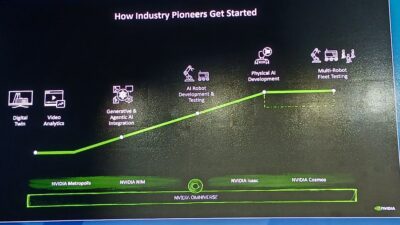Users in Europe, Middle East and Asia (EMEA) continue to be the leading consumer of industrial drives, but Asia Pacific users seem the most interested in obtaining the power and energy savings associated with VFD use.
Variable frequency drives (VFDs) provide dramatic energy savings in myriad applications with varying loads and speeds. But who is making the most of the power and energy savings benefits of industrial drives? Recent research from IMS Research (www.imsresearch.com) sheds some light.
The worldwide industrial drives market was estimated to be worth approximately $16.5 billion in 2008, with more than 20 million drive units shipped during the year. Industrial drives can be divided into seven product types: compact AC, standard AC, premium AC, DC, medium voltage, servo, and stepper drives. Of these products, the number of premium drives and medium voltage drives increased the most in 2008, growing by more than 20% over 2007 levels. This is linked to rapid growth of the major industry sectors that use these drives, namely renewable energy, oil & gas, mining, and metals, says IMS analysts.
The impressive growth of the premium and medium voltage drives market is also attributed to a shift in sales focus from low-end to high-performance products by vendors, specifically ABB and Siemens. These premium product categories are also expected to outperform the total industrial drives market during the global recession.
In comparison, significantly fewer motion control products, such as servo and stepper drives, are expected to be purchased and installed as the global recession continues. These products are used heavily on the semiconductor, robotics, machine tool, and printing industries, sectors that have been severely depressed by the recession. The servo drives market is predicted to contract by nearly 20% in terms of revenues in 2009, while the stepper drives market is forecast to decline by more than 8%, says IMS analysts.
Users in Europe, Middle East and Asia (EMEA) continue to be the leading consumer of industrial drives. They purchased approximately $7.2 billion worth of drives in 2008, accounting for more than 43% of the worldwide market. The region represents the largest geographic market for all seven industrial drive types, but has a significantly greater proportion of sales into the higher-end product categories, accounting for more than 58% of 2008 global premium drive revenues.
Overall, drive purchases are predicted to decline in 2009 by 10.4% as a result of the global economic downturn. After witnessing growth of 14.8% in 2008, purchases of industrial drives in the EMEA is projected to decline by 13.6% in 2009. The 2009 market contraction is expected to be more significant in the EMEA than in the Americas, but less severe than in Japan, says IMS Research.
Users in the Asia Pacific region are showing the greatest interest in new drives, and they’re the only users expected to purchase more drives in 2009 than they did in 2008. That fact is attributed to continued economic expansion in China, where GDP is forecast to increase by nearly 9% this year, and the focus on energy conservation by the Chinese government, witnessed in both the recent stimulus package and the existing Top-1000 program, which targets a 20% reduction in Chinese industrial energy consumption over a five-year period.
Production data collected by IMS Research also indicates that EMEA has been the largest manufacturing location for industrial drives through 2007; however, Asia Pacific became the largest producer of drives in 2008 after continued increases in low-end product manufacturing in the region. The largest design center for drives has been Japan, although it is predicted that beginning in 2011 the EMEA region will overtake Japan as the largest design center for industrial drives.
– Edited by Renee Robbins, senior editor
Control Engineering News Desk
More Motors and Drives news from Control Engineering
See also:
•
•
•
•



